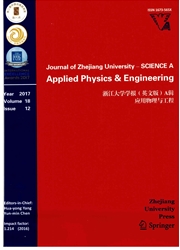

 中文摘要:
中文摘要:
纳米二氧化钛已是防晒霜、化妆品和光催化剂等的常用成分。纳米二氧化钛的大量应用,已被证明具有潜在的环境负面影响与人体健康风险。如何分析环境中工程纳米二氧化钛的理化性质无疑是认识其潜在风险的关键课题。 研究方法:从工程纳米颗粒可用的表征与测定方法(如电镜显微方法、色谱与质谱技术等)的优缺点出发,结合稳定同位素与稀有元素示踪技术来探讨环境中工程纳米二氧化钛颗粒的分析方法。 重要结论:环境中工程纳米二氧化钛的表征与测定方法仍需深入的研究,其可靠性需要现有各种分析技术的相互验证、良好的样品预处理技术和参考物质、以及稳定同位素与稀有元素技术示踪的配合。
 英文摘要:
英文摘要:
Titanium dioxide nanoparticles (TiO2-NPs) are common components used in sunscreens, cosmetics, industrial ap- plications, and many other products. Concerning their high production and widespread applications, characterization and quanti- fication of TiO2-NPs in various matrixes is a topic of great interest for researchers studying their potential environmental and health impacts. Validated and easily applicable analytical tools are required to develop and implement regulatory frameworks and an appropriate risk assessment for engineered nanoparticles (ENPs). Herein, we provide a critical review of the current knowledge available on world-wide production and measured environmental concentrations as well as on available techniques to measure and characterize these ENPs in the environment.
 同期刊论文项目
同期刊论文项目
 同项目期刊论文
同项目期刊论文
 期刊信息
期刊信息
